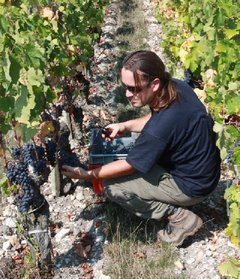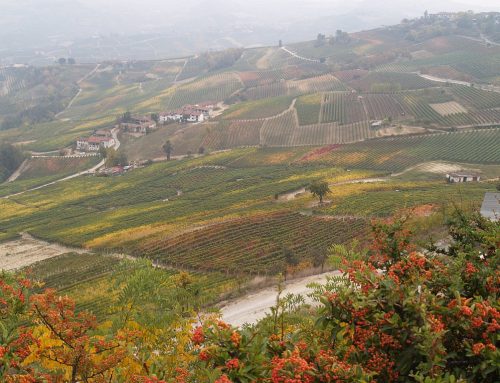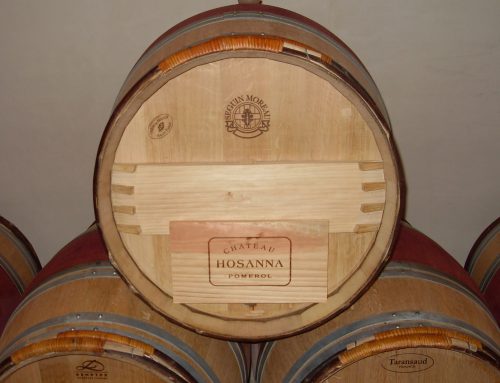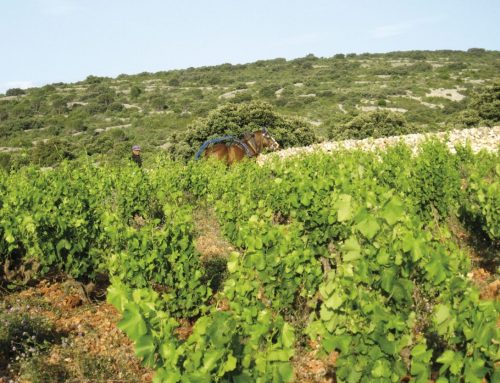In my more than 30 years in the wine world, I have not witnessed a more perfect harvest in Bordeauxthan this year’s.
I spent the first week of October in the vineyards and wineries of Fronsac, Pomerol, Lalande-de-Pomerol, St. Émilion and its surrounding villages, colloquially named “satellites” of St. Émilion. This section of Bordeaux is referred to as the right bank, as it lies on the right side of the Gironde River, which separates the two major wine areas of Bordeaux.
Weather determines harvest, and harvest determines quality. The cool mornings turned into sun-filled afternoons, when I regretted both my long-sleeved shirt and my lack of sunscreen. If the grapes could have talked, I’m sure they would have been singing odes to the sun god.
Merlot is the predominant grape in the right bank, and its deep purple skins in nearly flawless clusters beckoned me to pick a few. Gently biting them, the juice was sugar-sweet, blueberry-flavored and with brownish seeds. The latter is an important indicator of ripeness; if the seeds are green, the grape is under-ripe, and the wine will absorb the seed’s bitterness.
Rain is the necessary friend and the mortal enemy of the vine. Winter and early spring rains nourish the plant, but late summer and fall rains can inflate the grape, diluting the juice as harvest arrives. The 2009 vintage had enough of the former and little of the latter.
“Aside from a hail storm in May, 2009 was perfect,” says Christian Mouiex, owner of the world-renowned Château Pétrus in Pomerol and other acclaimed estates in Pomerol and St. Émilion. “We had rain when we needed it, and sun all the time.”
In St. Émilion, I stood by the sorting table at the world-famous Château Cheval Blanc as hardly a damaged or inferior grape was found by the team inspecting each bunch. Nearby, at the highly regarded Château Troplong Mondot, tasting the freshly pressed juice from the tanks was like being served a liquid form of warm black cherry pie. And in Fronsac, a glass of the fermenting wine at Château Cassagne Haut-Canon indicated that 2009 will be full and rich.
The Medoc, the official name of the left bank, had an equally wonderful harvest. “The quality of the fruit we have picked is absolutely gorgeous after almost ideal weather conditions in the vineyards from the spring flowering, throughout the summer, to the end of the harvest,” Bernard de Laage de Meux, director of the prestigious Château Palmer in Margaux, told me.
John Romano, a Cherry Hill-based Bordeaux wine broker and importer who was also visiting wineries throughout Bordeaux, agrees. “The fruit in the Medoc is consistent with the healthy ripeness found throughout the right bank,” he says. These ideal conditions across Bordeaux presage an excellent 2009 vintage.
It will be spring 2010 before we know for certain, as the wines still have to go through malolactic fermentation — the process of changing the tart acid (think Granny Smith apple) to a creamy lactic acid (think milk), and start their barrel-aging regime. “Now our attention is on a very careful vinification to get the greatest from this harvest,” de Laage de Meux says. “Vinification is indeed challenging, requesting a lot of attention to details to achieve the ideal balance and harmony that are the hallmarks of a great wine and vintage.”
In the coming weeks and months, you will surely read in various wine publications that the 2009 is like the 1947, or the greatest since 1961, or a repeat of the heralded 1982. Take it all with a grain of salt. Sometimes this is said or written by someone who wasn’t even born when the 1947 or 1961 was made. And many of the heralded 1982s never lived up to their trumpeters’ sounds.
What I can tell you, with the experience of being immersed in the wine world since 1975, is that the 2009 vintage has every ingredient for excellence. And of course, excellence comes with a price. But that is a story for another column.








Leave A Comment